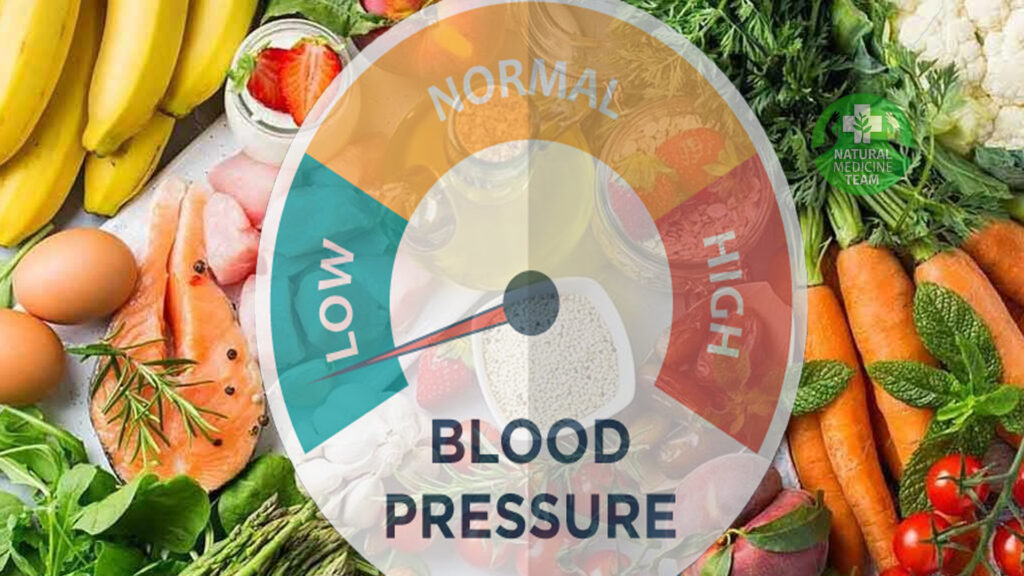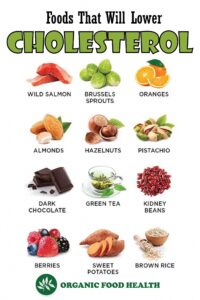Living with diabetes and high blood pressure can be challenging, as these conditions require careful management of one’s diet. However, with the right knowledge and guidance, it is possible to enjoy a healthy and fulfilling lifestyle. In this article, we will explore the foods that are beneficial for individuals with diabetes and high blood pressure, providing valuable insights and practical tips to help you make informed choices. By incorporating these foods into your diet, you can improve your overall health and well-being.
The Importance of a Healthy Diet
A healthy diet plays a crucial role in managing diabetes and high blood pressure. It can help control blood sugar levels, reduce blood pressure, and prevent complications associated with these conditions. A balanced diet should be rich in essential nutrients, such as vitamins, minerals, fiber, and healthy fats. It should also be low in sodium, saturated fats, and added sugars.
When planning your meals, consider the following guidelines:
- Focus on whole foods: Choose fresh fruits, vegetables, whole grains, lean proteins, and healthy fats. These foods are nutrient-dense and provide a wide range of health benefits.
- Avoid processed foods: Processed foods often contain high levels of sodium, unhealthy fats, and added sugars. These can increase blood pressure and blood sugar levels.
- Control portion sizes: Overeating can lead to weight gain and worsen diabetes and high blood pressure. Be mindful of portion sizes and listen to your body’s hunger and fullness cues.
- Limit alcohol consumption: Excessive alcohol intake can raise blood pressure and interfere with diabetes management. If you choose to drink, do so in moderation.
Foods to Include in Your Diet
Now, let’s explore the specific foods that are beneficial for individuals with diabetes and high blood pressure:
1. Leafy Green Vegetables
Leafy green vegetables, such as spinach, kale, and Swiss chard, are packed with vital nutrients and antioxidants. They are low in calories and carbohydrates, making them an excellent choice for individuals with diabetes. Additionally, their high potassium content helps regulate blood pressure.
2. Berries
Berries, such as strawberries, blueberries, and raspberries, are rich in fiber, vitamins, and antioxidants. They have a low glycemic index, meaning they have a minimal impact on blood sugar levels. Including berries in your diet can enhance heart health and improve insulin sensitivity.
3. Whole Grains
Whole grains, such as quinoa, brown rice, and whole wheat bread, are high in fiber and complex carbohydrates. They provide sustained energy, promote satiety, and help regulate blood sugar levels. Additionally, whole grains have been associated with a lower risk of heart disease.
4. Lean Proteins
Including lean proteins in your diet, such as skinless chicken, fish, tofu, and legumes, is essential for managing diabetes and high blood pressure. Proteins are vital for cell repair and maintenance, and they help control blood sugar levels. Choose lean sources to minimize saturated fat intake.
5. Healthy Fats
Healthy fats, such as avocados, olive oil, and nuts, are excellent additions to a diabetes and high blood pressure-friendly diet. These fats help reduce inflammation, improve heart health, and stabilize blood sugar levels. However, it’s important to consume them in moderation, as they are calorie-dense.
6. Fish
Fatty fish, such as salmon, mackerel, and sardines, are rich in omega-3 fatty acids. These essential fats have been shown to lower blood pressure, reduce inflammation, and improve insulin sensitivity. Aim to include fish in your diet at least twice a week.
7. Low-Fat Dairy Products
Low-fat dairy products, such as skim milk, yogurt, and cottage cheese, are excellent sources of calcium, protein, and vitamin D. They can help lower blood pressure and improve insulin sensitivity. However, choose low-fat options to minimize saturated fat intake.
8. Garlic
Garlic has been used for centuries for its medicinal properties. It contains compounds that help lower blood pressure and improve blood sugar control. Incorporating garlic into your meals, either raw or cooked, can provide these health benefits.
9. Cinnamon
Cinnamon is a delicious spice that may help improve insulin sensitivity and lower blood sugar levels. Sprinkle it on your oatmeal, yogurt, or add it to your tea to enjoy its health benefits.
10. Dark Chocolate
Good news for chocolate lovers! Dark chocolate with a high cocoa content (70% or more) is rich in antioxidants and flavonoids. It can help lower blood pressure and improve insulin sensitivity. However, enjoy it in moderation due to its calorie content.
The Power of Meal Planning
Meal planning is a valuable tool for individuals with diabetes and high blood pressure. It allows you to make healthier choices, control portion sizes, and maintain balanced blood sugar and blood pressure levels. Here are some tips to help you get started:
1. Plan your meals in advance
Take some time each week to plan your meals and create a shopping list. This will help you avoid impulsive food choices and ensure that you have all the necessary ingredients on hand.
2. Include a variety of foods
Ensure that your meals include a balance of carbohydrates, proteins, and healthy fats. Include a variety of fruits, vegetables, whole grains, and lean proteins to maximize nutrient intake.
3. Cook in bulk
Cooking in bulk can save you time and effort. Prepare larger portions and store leftovers in the fridge or freezer for future meals. This will prevent you from relying on unhealthy takeout options when you’re short on time.
4. Use herbs and spices
Herbs and spices are a great way to add flavor to your meals without relying on salt or unhealthy sauces. Experiment with different combinations to enhance the taste of your dishes.
5. Monitor portion sizes
Be mindful of portion sizes to avoid overeating. Use measuring cups or a food scale to ensure you’re consuming the appropriate amounts. This can help you maintain a healthy weight and control blood sugar and blood pressure levels.
Frequently Asked Questions
1. Can I still enjoy sweets if I have diabetes and high blood pressure?
While it’s important to limit your intake of sweets, you can still enjoy them in moderation. Opt for healthier alternatives, such as fruit-based desserts or dark chocolate with a high cocoa content.
2. Are there any foods I should avoid completely?
While there are no foods that you need to completely avoid, it’s important to limit your intake of processed foods, sugary beverages, and foods high in sodium and saturated fats.
3. Can I drink coffee if I have diabetes and high blood pressure?
Yes, you can still enjoy coffee if you have diabetes and high blood pressure. However, it’s important to consume it in moderation and avoid adding excessive sugar or cream.
4. Is it necessary to count carbohydrates?
Counting carbohydrates can be helpful for managing blood sugar levels. Consult with a registered dietitian or healthcare professional to determine the appropriate carbohydrate intake for your specific needs.
5. Can exercise help control diabetes and high blood pressure?
Yes, regular exercise is beneficial for managing both diabetes and high blood pressure. It can improve insulin sensitivity, lower blood sugar levels, and reduce blood pressure. Consult with your healthcare provider to determine a suitable exercise routine for your condition.
Conclusion
Managing diabetes and high blood pressure requires a holistic approach, and diet plays a crucial role in this process. By incorporating the foods mentioned in this article into your diet and following the meal planning tips provided, you can effectively manage your condition and improve your overall health. Remember to consult with a healthcare professional or registered dietitian for personalized advice and guidance.
FAQs After The Conclusion:
1. Can I still enjoy sweets if I have diabetes and high blood pressure?
While it’s important to limit your intake of sweets, you can still enjoy them in moderation. Opt for healthier alternatives, such as fruit-based desserts or dark chocolate with a high cocoa content.
2. Are there any foods I should avoid completely?
While there are no foods that you need to completely avoid, it’s important to limit your intake of processed foods, sugary beverages, and foods high in sodium and saturated fats.
3. Can I drink coffee if I have diabetes and high blood pressure?
Yes, you can still enjoy coffee if you have diabetes and high blood pressure. However, it’s important to consume it in moderation and avoid adding excessive sugar or cream.
4. Is it necessary to count carbohydrates?
Counting carbohydrates can be helpful for managing blood sugar levels. It allows you to track your carbohydrate intake and make informed decisions about your meals and snacks. However, it is not necessary for everyone with diabetes and high blood pressure. It is recommended to work with a registered dietitian or healthcare professional to determine the best approach for managing your specific condition.
5. Can exercise help control diabetes and high blood pressure?
Yes, exercise is highly beneficial for individuals with diabetes and high blood pressure. Regular physical activity can help improve insulin sensitivity, lower blood sugar levels, reduce blood pressure, and promote overall cardiovascular health. Engaging in activities such as walking, swimming, cycling, and strength training can have a positive impact on your condition. However, it is essential to consult with your healthcare provider before starting any new exercise routine to ensure it is safe and appropriate for your individual needs.
Summary
Managing diabetes and high blood pressure requires a comprehensive approach that includes a focus on a healthy diet. Incorporating foods like leafy green vegetables, berries, whole grains, lean proteins, healthy fats, fish, low-fat dairy products, garlic, cinnamon, and dark chocolate can provide valuable nutrients and help regulate blood sugar and blood pressure levels. Meal planning, using herbs and spices, and monitoring portion sizes are effective strategies for maintaining a balanced diet. Remember to enjoy sweets and coffee in moderation, count carbohydrates if necessary, and incorporate regular exercise into your routine. By making informed choices and seeking guidance from healthcare professionals, you can successfully manage your conditions and improve your overall well-being.



